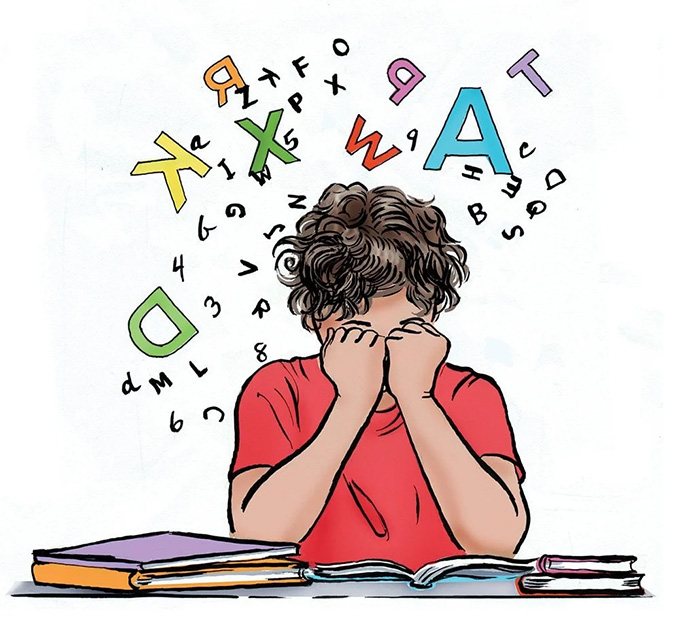
Martina is 9 years old and is in third grade. This year she begins the bilingual education itinerary, in which natural and social sciences classes are taught in English.
Her family is concerned about this new beginning because Martina has a specific difficulty learning to read and write. In reading, she has difficulties in decoding, being able to read “Asturias” in a text when she actually says “Austria”; In writing she makes quite a few mistakes (for example in words with stuck syllables – with two consonants in a row – like “balloon” or “teacher”) that should be overcome by now.
Since learning to read and write has been slower and more difficult for Martina, her parents are worried about what a completely new language may mean for her.
Martina’s dyslexia , in a bilingual education environment CLIL (Content Integrated Learning and Foreign Languages) , can be a great challenge.
Possible difficulties
Studies in this area reveal that students with dyslexia may face specific difficulties when learning to read and write in other languages. Among these challenges we can generally point out the following:
- The increase in cognitive load when presenting new content in a foreign language.
- Reading and writing difficulties inherent to dyslexia.
- Barriers to accessing vocabulary or difficulties in understanding, which may limit their ability to understand the content and actively participate in classroom practices.
However, various research reveals that education in a CLIL context could be beneficial for students with dyslexia as long as it is done appropriately. To achieve this, it is necessary to opt for an inclusive approach, taking into account the specific needs that each student may present.
Necessary adaptations
Below we list some of the adaptations that could be carried out in this type of context with students with dyslexia:
- Adapted materials : Provide adapted reading and writing materials, ensuring that the content is accessible. To do this, we can use appropriate fonts , highlight key words, simplify the language, promote the use of resources with greater auditory, visual or kinesthetic support (concept maps, graphics, videos, practical activities…) to facilitate access to information.
- Flexibility in the methodology : It is necessary to adapt the methodology depending on the needs and individual progress of the students. In addition, methodologies that promote collaborative work must be supported.
- Use of technology : The use of various technological tools such as, for example, reading and writing software or digital resources that offer interactive and adapted content (reading aloud, visual aids, instant translation, among others) and that can be highly useful. useful for learning a second language.
- Alternative assessments : The assessment of students with dyslexia should be primarily oral and not based exclusively on exams. Different assessment methods could be used that do not focus exclusively on reading and writing, such as projects, practical activities and oral presentations, among others.
- Provide extra time and rest periods, both in completing tasks and in evaluations.
In order to implement these adaptations, it is important that teachers are specifically trained in bilingual teaching and that they be able to collaborate with psychopedagogues and counselors specialized in dyslexia, so that they know and design inclusive and specific teaching strategies for students with dyslexia. .
Benefits of learning in another language, with dyslexia
If the above adaptations are taken into account, students with dyslexia can be successful in a CLIL education environment, and this methodology can even improve their skills in both languages and their confidence. Some of the benefits that could be achieved are:
- Support for language development : Greater exposure to a foreign language can help develop language skills in a more integrated and contextualized way.
- Development of metacognitive skills : Improving, for example, self-awareness of the learning process, self-regulation or self-evaluation. By being aware of how to manage their difficulties they can become more autonomous in their learning.
- Improved self-esteem and confidence : Students with dyslexia often have self-esteem and confidence problems. It is important, therefore, that they learn through their strengths, increasing their self-esteem and making them feel more competent and valued.
Despite the specific challenges that starting to study science in English may pose for Martina, if her teachers and counselors put in place the appropriate adaptations, materials, and spaces, Martina can continue learning in both languages like the rest of her classmates.
All students can benefit from diverse teaching methods, promoting the development of metacognitive strategies and opportunities to reach their full potential.
Author Bio: Jessica Abalo Paulos is a Researcher in the Department of Didactics, School Organization and Research Methods at the University of Vigo, with a predoctoral contract for the training of doctors (FPI) at Universidade de Vigo
